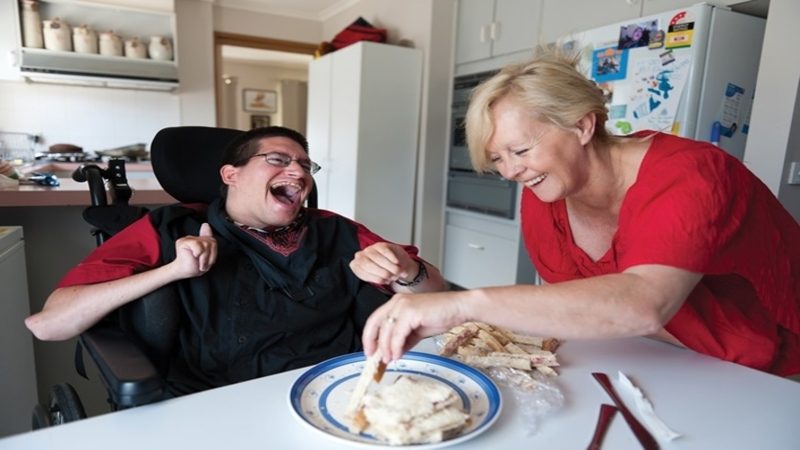Improving Communication with Disabled Persons
Disabled people have to face many challenges when they are trying to communicate with others. Many people tend to see them as ‘different’, and this imposes significant barriers to effective communication. Over time, they may feel lonely and incapable of being included in society, and they let go of opportunities to take part in normal life. This feeling of being disadvantaged could result in loneliness and isolation, depression, anxiety and fear. With the right ways of communication, this can be prevented.
Here is how you can improve your communication with disabled persons.
Treat them as you would anybody else.
Quite often, disabled people feel that others talk down to them, or treat them as though they are stupid. Just because they have a disability does not mean that they are unable to function normally in all other ways.
Ask their loved ones how to communicate with them.
Their caretakers are the ones who know them best, so you can ask them how they get the message across. Sign language, facial expressions, writing on paper, showing gestures are some communication methods that may work for different people. You should adjust and fall in line with their preferred ways of communication.
Identify yourself
Every time you meet, identify yourself as is appropriate. If the person is blind, let them know when you are entering and exiting the room. If they are deaf, tap them on the shoulder or wave your hand, and speak slowly so they can read your lips. There is no one-method-fits-all solution and you will have to judge each person’s capabilities differently.
Keep distractions aside and give them your full attention
You should keep the background noise down, avoid other distractions, and give them your full respectful attention when talking to them. Give them time to respond, and allow the silence to become comfortable. Switch off your cell phone and do not look at messages.
Acknowledge their efforts and be respectful.
Try using words such as ‘yes’, ‘hmm’, or just nodding to acknowledge their responses. Give them time to articulate their responses to your communication.
Smile!
A smile makes a big difference to the entire communication and will help them to feel comfortable and open up to you more….especially if they are struggling to find the right words.
Give them some prompts.
You can prompt them with a word or an action, to help them along when they are struggling to respond. Encourage them to convey their message in whatever way makes them comfortable. Be compassionate and do not lose patience.
Speak slowly and clearly
When you are talking, do not rush your words. Speak very slowly and articulate your words clearly, to improve the chances of success of the conversation. Use the right body language, facial expressions and tone of voice.
Look at them directly, make eye contact
Many people tend to speak to the caretaker rather than the person who is differently abled. Never do that —always make sure that you maintain eye contact and speak to them directly.
Speech devices may help
Speech devices use technologies to convert written words to speech, and can help in some instances.
Keep your sense of humor intact!
Patience, compassion and a sense of humor can go a long way toward helping effective communication. Even if your initial efforts fail, stay persistent and you will eventually succeed.
Treat adults as adults
Do not talk down to disabled people, whether they are adults or children. Treat them with great respect at all times. Never patronize them or be too familiar.
With the right communication methods, the cognitive-communication skills of the disabled person can grow and they can get more opportunities for inclusion in social situations, enabling them to have a better life and even opening up possibilities of education and/or employment.
Related Blog: Becoming a Disability Support Worker in Australia
 slot gacorslot gacorslot online
slot gacorslot gacorslot online 
